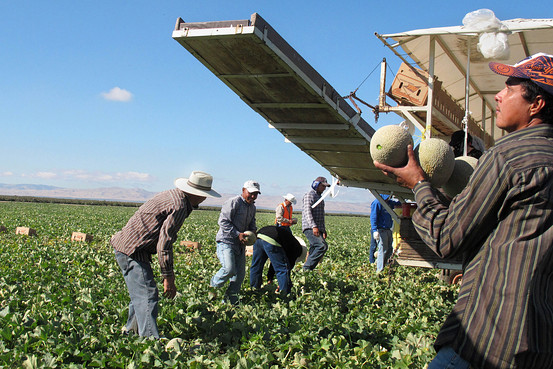
by U.S. Chamber Of Commerce Staff
As the vocal debate over immigration and securing the border continues on Capitol Hill, it is important to move past the noise and stay focused on solutions.
The U.S. Chamber’s Randel K. Johnson, senior vice president of labor, immigration and employee benefits, will add to that conversation as he testifies Thursday at a hearing – “Securing the Border: Defining the Current Population Living in the Shadows and Addressing Future Flows” — before the Senate panel on Homeland Security and Government Affairs.
“It is clear as a matter of logic that legal temporary worker programs for lesser-skilled workers would enhance U.S. security and border control,” Johnson says in his prepared remarks
Johnson continues: “To be blunt, and less academic, job availability in this country will always be a magnet for those in less well-off countries that are looking to better themselves and their families. Unfortunately, that magnet has led to illegal immigration, despite significant efforts at improved border control. The U.S. can help eliminate the incentive for illegal immigration if temporary worker programs can be used to fill available jobs – assuming that efforts have already been made to fill those jobs through the recruitment of U.S. workers.”
William McGurn, in a recent Wall Street Journal column, also focused on finding a fix.
So if citizenship is the sticking point, why not start with something that by definition is not about citizenship: guest workers?
In fact, we already have a bunch of visas for guest workers. Let’s confine ourselves to two: the H-2A for temporary agricultural workers and the H-2B for temporary nonagricultural workers. The workers these programs provide, mostly unskilled, fill niches in today’s U.S. labor market where there simply aren’t enough Americans. Problem is, the need for these workers is much greater than the supply of available visas. …
Guest workers aren’t the only piece in the immigration puzzle. But they are a big one. And shouldn’t those who say they don’t want an immigration system that rewards illegality be among the biggest cheerleaders for a new and more effective guest-worker program?
The Chamber’s Johnson, in his testimony, puts the call out to Congress and the president to find the solutions.
It is time to move past passion, to problem solving. Members of Congress and the president are elected to work together to solve our country’s problems – thus, not finalizing meaningful, passable pieces of legislation that can be signed into law to address the dysfunction of our immigration system should not be an option. This goal does not dictate any set legislative path. In the last Congress, the Senate passed a comprehensive bill but that is only one possible approach. Other routes can be taken, while being fully responsive to the reality that many aspects of reform have interlocking components.
The Chamber supports immigration because immigrants have always been a key to the success of our economy. Thus, we will continue to champion commonsense immigration reform, of which future flows of temporary foreign workers – the topic of this hearing – is one key component.



